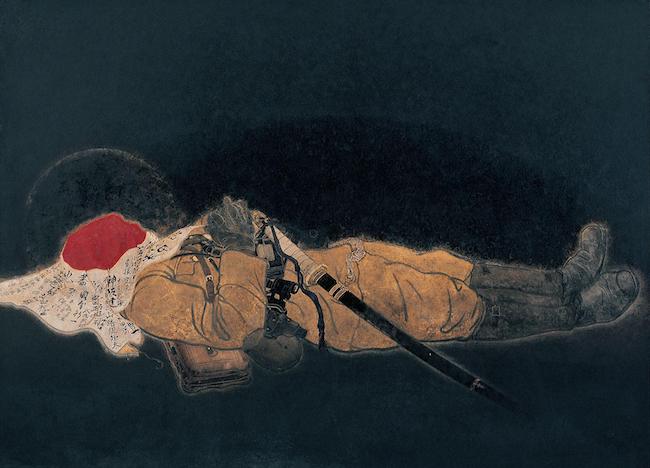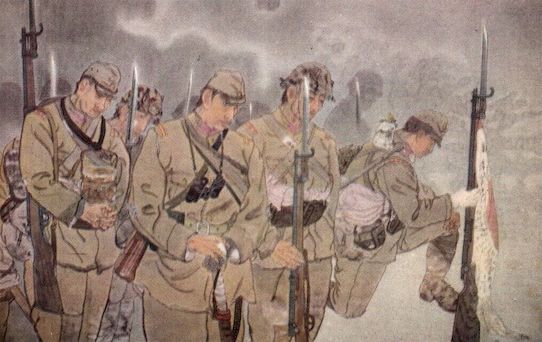Japan Art and the War Period: Kobayakawa Shusei and loyalty
Lee Jay Walker
Modern Tokyo Times

The Japanese artist Kobayakawa Shūsei (1885-1974) was born in Hyogo Prefecture. Accordingly, he witnessed the militarization of Japan that developed during the Meiji Period and continued until the end of the Pacific War (World War Two).
The Metropolitan Museum of Art says, “Kobayakawa is better known as a painter of wartime scenes, which he created during the early years of the Pacific War while traveling with the Japanese Army on campaigns in China and Southeast Asia. His works during this period are associated with the modern traditionalist mode known as Nihonga, which use media and formats familiar to traditional Japanese painting.”
His world was very different and nigh impossible for most people to understand. Accordingly, slavery persisted in the land of Mecca until the 1960s – and Western colonialism was in full swing during much of Kobayakawa’s life.

Western encroachment in Northeast Asia also led Japan to focus on militarization and develop the same imperial mindset of earlier empires – from the British to the Ottomans. Hence, during the war period, Japan – similar to other nations – employed art, religion, propaganda, and the media to espouse the moral doctrine of Japan’s cause.
Even the most anti-nationalist person can understand the power of the first art piece by Kobayakawa. This concerns the emotion it stirs and the sacrifices that were made. Therefore, Kobayakawa – no different from Arab Muslims buying slaves in the early 1960s in Arabia – or British elites exploiting the resources of untold nations – was a person of his time. Therefore, he served the country he loved.

Individuals are caught up by what the ruling elites enforce – irrespective if evil is committed on a grand scale. Hence, do you blame the Muslim slaver in Arabia or the powers that enabled this until the 1960s – do you blame Irish soldiers who joined the British Army even during the period of famine and who served British colonialism in high numbers – do you blame indoctrinated Japanese soldiers for the Nanjing Massacre – do you blame ordinary people for the Cultural Revolution in China – and on and on?
These questions are endless and the modern period via social media – and political correctness – is muddying the water to the point of stupidity. Accordingly, Kobayakawa was a gifted artist who happened to belong to a world where war was – and remains – common.

Modern Tokyo News is part of the Modern Tokyo Times group
http://moderntokyotimes.com Modern Tokyo Times – International News and Japan News
http://sawakoart.com – Sawako Utsumi and her website – Modern Tokyo Times artist
https://moderntokyonews.com Modern Tokyo News – Tokyo News and International News
PLEASE JOIN ON TWITTER
https://twitter.com/MTT_News Modern Tokyo Times
PLEASE JOIN ON FACEBOOK